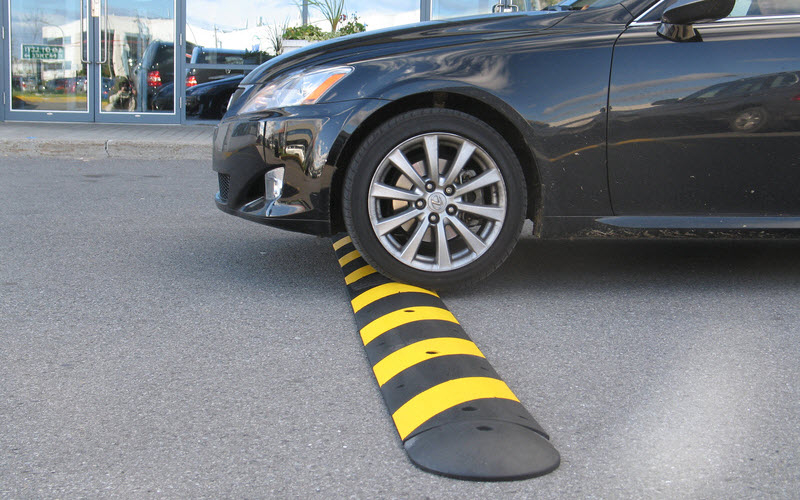
We don’t tend to spend too much of our day thinking about the finer details of traffic safety and speed limiting methods, and when it comes to speed humps and speed bumps, the two terms are generally used interchangeably by most to mean the same thing.
Speed bumps and speed humps are, in fact, two different things. Both carry the same purpose in that they encourage safe driving in pedestrian areas by regulating speed, but they have different properties that make them suitable for different applications. With that in mind, what exactly are the differences between your average speed bump and speed hump?
Speed bumps
Speed bumps represent the more aggressive traffic calming option of the two, encouraging comfortable passage speeds of around 2-10mph when driving over them. Typically anywhere from two to four inches high, speed bumps carry a very short travel distance – around half to a full wheel’s rotation – with the idea that a car has to come to a near stop to pass over them without incident and both axles experience an abrupt bounce from the bump.
Because of that, speed bumps are used in areas where pedestrians and cars share space closely, such as car parks and driveways. They’re less suitable for road use because of the significantly slower speed requirements than local area limits. Indeed, if a car was to pass over a speed bump at normal speeds, there’s a good chance it may cause damage to the car or notable discomfort to those riding in it.
Speed humps
The raises in the road you find scattered around your local 20-30mph residential roads are speed humps. A much less aggressive form of speed regulation, speed humps allow cars to pass over them with a gentle rocking sensation – that is as long as safe speeds are maintained when going over them. Cars travelling higher speeds than the legal limit will find speed humps a lot more jarring, causing disruption to the ride and any passengers and cargo on board.
Speed humps come in a variety of profiles that influence the level of disruption caused to the vehicles travelling over them. Ranging from three to 20ft, you’ll find speed humps predominantly in one- or two-lane urban stretches of road, often coupled with other traffic calming methods like bollards or other obstructions to prevent cars from driving around them.
The beauty of both speed bumps and humps lies in their simplicity. No matter how familiar we as drivers are with them, they never become less of a deterrent because of the discomfort attached to driving over them at unsafe speeds. A cheap and simple installation for commercial properties and local councils alike, speed bumps and speed humps will continue to dominate lower speed areas on UK roads.
At least now, though, you know the differences between the two.